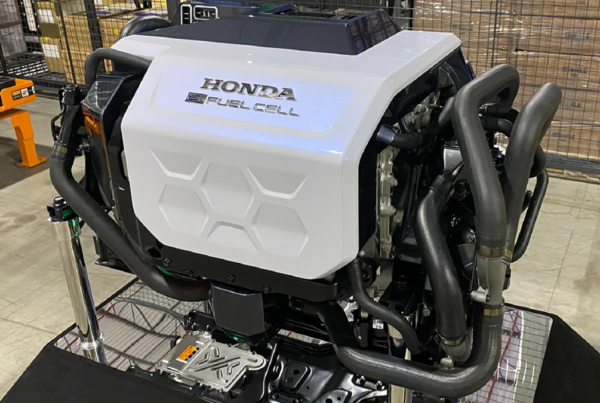
Zero emission battery electric fire tenders – in combination with hydrogen fuel cells and a minimum of 8kg of onboard hydrogen fuel storage – will meet current requirements for flexibility, emergency response and the water pumping requirements. This will be invaluable particularly in rural and semi-urban services, and for specialist HGVs with power take-offs, where batteries alone will not provide the overall energy needs of the application.
That is the conclusion of research just completed by ULEMCo, the hydrogen fuel pioneer, who partnered with Oxfordshire County Council and its Fire and Rescue Service in the study. The findings are important both for the deployment of fully functional fire engines across all parts of the UK, but also other specialist vehicles requiring significant power take-off in their operations.
Analysis of the real-world energy requirements of fire appliances, including the requirement in EN1486 for four hours water pumping energy, confirmed that 8kg of hydrogen with a Toyota Gen2 fuel cell range extender would be sufficient to provide range extension of a 220kW battery designed base vehicle. The combination of stored energy in the batteries and hydrogen fuel which can be refuelled rapidly, are needed to ensure the “always ready”, rapid response requirements of the operation.
A second conclusion from the work is that this onboard energy strategy incorporating hydrogen fuel could be met within the existing vehicle design, with no compromise to the equipment installation, and therefore would speed up the potential deployment of zero emission vehicles in these types of application.
As part of the project, the existing fire station locations in Oxfordshire were assessed, and options proposed for hydrogen refuelling locations that would not only allow the engines to refuel cost effectively, but also provide facility for the rest of the Oxfordshire public sector fleet. The key was finding locations where consolidated demand would be over 200kg a day, so that hydrogen infrastructure investors would be able to supply hydrogen at a price/kg similar to existing fuels and ownership cost models.
Following the study, Oxfordshire Council is evaluating the logistics of establishing a hydrogen refuelling infrastructure with Oxfordshire Fire Service who manage a county wide service covering both the City and the wider urban, semi-urban and rural areas of Oxfordshire.
The next steps with the project are to secure funding to build a prototype fire tender. We shall demonstrate the flexibility and technical capability of the hydrogen fuel cell range extension approach.
Amanda Lyne, Managing Director ULEMCo
This clever combination of battery power with hydrogen fuel cell range extender is excellent news for those of us who are optimistic that hydrogen could play an important role in the decarbonisation process. Moving heavy duty vehicles like fire engines away from fossil fuels is a difficult challenge, so this is an important step in exploring and advancing zero carbon solutions.
Councillor Pete Sudbury, Oxfordshire County Council’s Cabinet Member for Climate Change and Environment
This research is really exciting. We are committed to reducing our emissions in line with the county’s ambitions and this provides a potential route to achieving this ahead of expectations, as well as forging a way for the whole sector.
Read the most up to date Fuel Cell and Hydrogen Industry news at FuelCellsWorks




